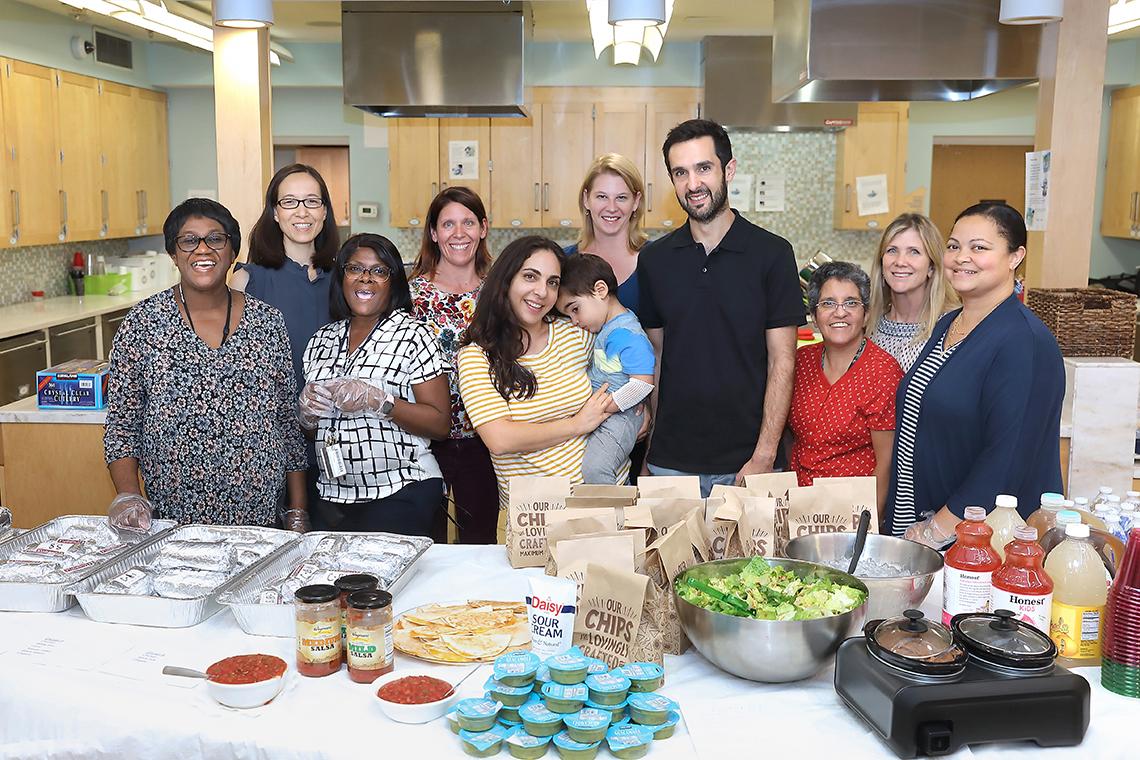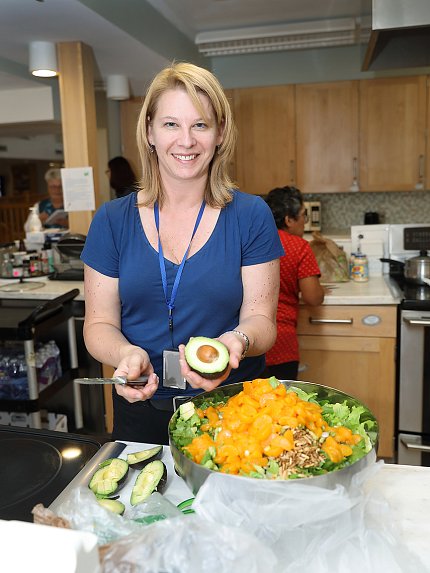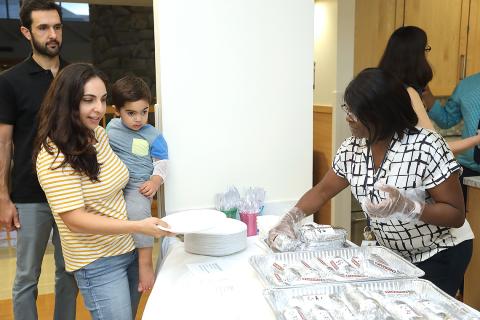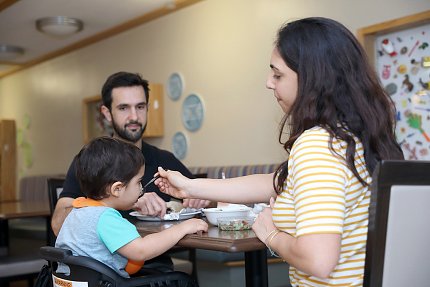Dental Team Works Together, Volunteers Together

Photo: Chia-Chi Charlie Chang
In October, colleagues from NIH’s Dental Clinic headed over to the Children’s Inn at NIH after work to make dinner. “We wanted a different way to serve our patients,” says Dr. Marie Kao-Hsieh, NIDCR’s chief of dental clinic operations.
By day, Kao-Hsieh and her dental and nursing colleagues from NIDCR and the Clinical Center help patients with a wide array of problems that arise as a result of their dental and medical conditions. That care is not limited to patients who are enrolled in NIDCR research protocols. About 60 percent of the patients who are treated at the Dental Clinic are referred by intramural investigators from other institutes.

Photo: Chia-Chi Charlie Chang
“Some of the patients we see in clinic are referred for research purposes, and some are referred for dental issues. Many are so medically compromised that dentists in their communities won’t see them,” says Dr. Pamela Gardner, chief of NIDCR’s Dental Consult Service and chief salad maker for the clinic’s volunteer team.
The idea to serve hatched during one of the clinic’s own potlucks, where “we discovered we had culinary talents,” Kao-Hsieh says. For their first dinner at the inn, the NIDCR team—including dentists, dental hygienists and technicians, a research program coordinator and the clinic’s charge nurse—combined food they made with donations from Chipotle and the NIDCR leadership.
“It was great to come in and see how the inn is run,” says Gardner, who, for many years had walked past the inn on her way to work, but like many NIH staffers, had never been in the building.

Photo: Chia-Chi Charlie Chang
The Children’s Inn, which is located across from the Clinical Center, is a nonprofit that provides free lodging and support services to families of children and young adults participating in NIH studies. It relies heavily on volunteers from within and outside the NIH community to help with meal preparation, tutoring and many other activities, including the making of “Thoughtful Treasures.” The children rush down in the morning to see what is in their mailbox and often take their treasures with them to their appointments, says Sonja Luecke, communications manager for the inn.
Parents also look forward to caring gestures that come from staff and volunteers. “We’re just grateful for all the support we’re getting at one of the most stressful times in our lives,” says Rojan Vakili, mother of 2-year-old Darian Tavasoly. Darian recently received gene therapy for GM1 gangliosidosis, a rare neurodegenerative disease. He and his parents will return to NIH in December and periodically over the next 5 years.

Photo: Chia-Chi Charlie Chang
“When you have a special needs child, your own needs get put aside,” says Vakili. “Having food provided for us means we don’t have to think about food. It is one less thing I have to worry about.”
The Dental Clinic staff was “delighted that many of the Children’s Inn residents recognized us,” says Kao-Hsieh. She and her colleagues plan to make volunteering a regular activity. They will next serve dinner to the children and their families in January.
For any individual or group interested in volunteering at the inn, contact Meghan Arbegast at meghan.arbegast@nih.gov or (301) 827-6064
